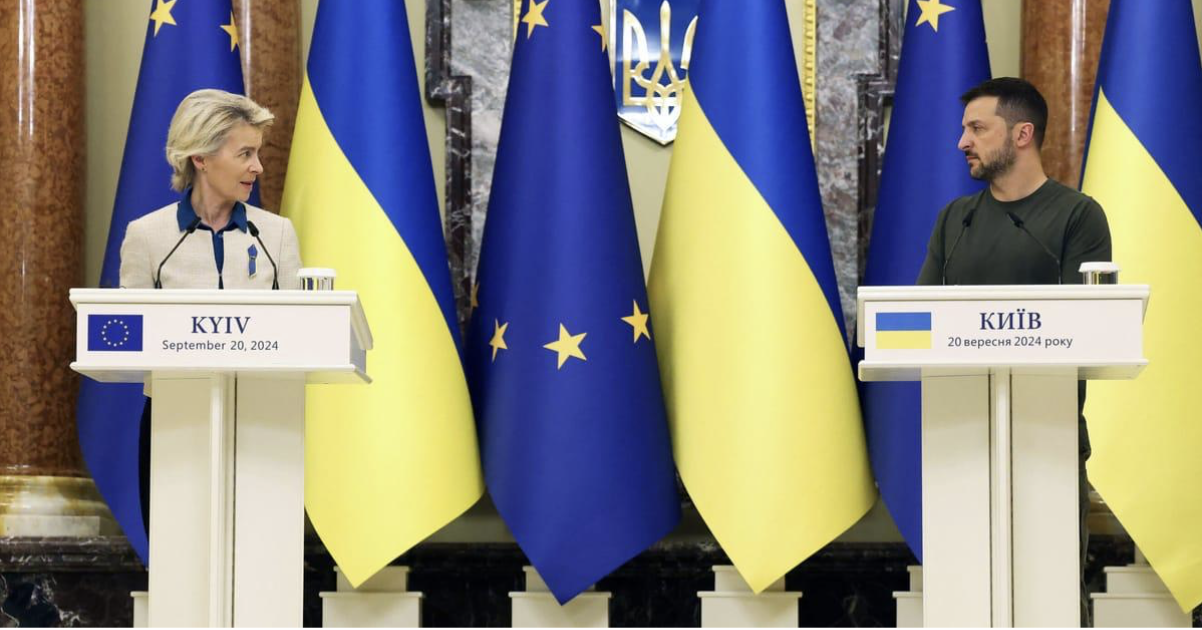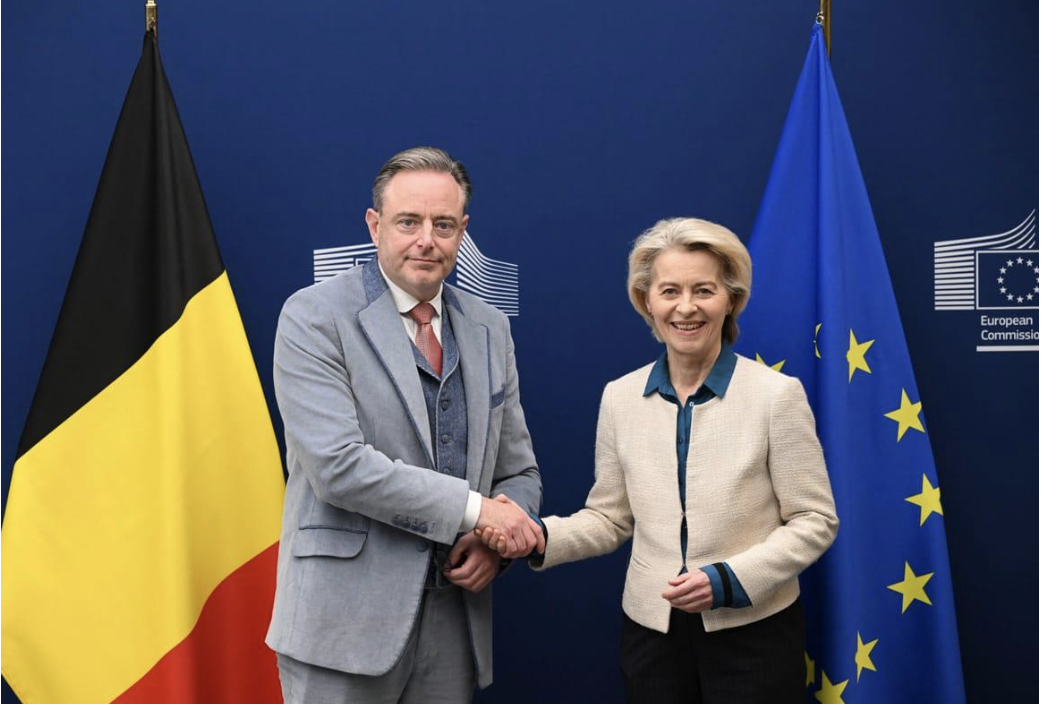Can the EU use Russian billions to fund Ukraine?
By Seán Doherty, reading time: 3 minutes
European Commission President Ursula von der Leyen is leading talks on a €140 billion loan package for Ukraine using frozen Russian Assets
https://www.politico.eu/article/ursula-von-der-leyen-announce-e35-billion-eu-loan-ukraine/
The EU has, for some time now, been deliberating on how to keep funding its military support for Ukraine, as well as financing the rebuilding of the country when the war eventually comes to an end. The need for a collective European solution to this issue has been exacerbated since Donald Trump regained power in the US. Since his January 2025 return, the President has stated several times that his nation would cut support for Kyiv if no progress on a ceasefire agreement was made. Since then, the US has halted all military and financial support, instead sending weapons only on the condition that these weapons are paid for by other NATO countries.
Kyiv needs support now – are frozen Russian assets an option?
One potential method the EU could use to continue funding Ukraine lies in the form of frozen Russian assets, currently estimated to be €193 billion, held at a central securities depository called Euroclear in Brussels. The assets were frozen at the beginning of Russia’s full-scale invasion in 2022, but have not been utilised so far. Countries such as the US, Germany and Belgium were sceptical of potential Russian backlash. Belgium, in particular, fears facing the blame from Russia as they are holding the assets.
However, over the last year, this hesitant stance has changed as Europe slowly realises it will be up to them to fund and support Ukraine’s war and rebuilding efforts. The European reaction to this dilemma will indicate how strong the EU’s support for Ukraine actually is, with Kyiv desperately needing an agreement to be reached over military and financial aid packages. The EU must reach an agreement on how to continue supporting Ukraine before 2026, when Ukraine will face a massive shortfall in its budget due to the US withdrawal of funding. It is estimated that Ukraine requires €140 billion over the next two years.
Is this legal?
The European Commission feels that using the immobilised assets in the form of a loan to Kyiv, to be repaid by Russia after the war, is the most efficient and effective way of maintaining vital support for Ukraine. European Commission President Ursula von der Leyen has been leading these negotiations and seeking to reach an agreement that all member states can abide by. Until now, Belgium has been blocking any deal, citing the financial and legal risk it feels it would be taking on all by itself. On November 14, Von der Leyen met with the Belgium Prime Minister Bart de Wever in an attempt to convince him to unblock the Commission’s executive €140 billion loan plan. While there will always be risks associated with the apparent confiscation and use of another nation’s assets, the Commission’s plan does not breach international law according to the European Policy Centre. This is because Euroclear would hold EU-guaranteed bonds, allowing Russia to preserve its legal claim to the assets. When Ukraine pays back the loan, using Russian war reparations, Russia can claim back the frozen assets from Euroclear. It is important to take the proposed deal with a large pinch of salt, as it hinges on Russia agreeing to pay reparations. However, the consensus among European officials is that the plan is steadily moving along. Belgium will receive guarantees of support from EU member states if Russia later demands the money used to be returned. European leaders are scheduled to meet in December 2025 to finalise the loan package for Ukraine.
Belgium Prime Minister Bart de Wever is seeking assurances from the EU before allowing any immobilised Russian assets to be used in the loan package https://www.politico.eu/article/von-der-leyen-meets-belgiums-de-wever-to-discuss-e140b-ukraine-loan/
Turning point for the EU and Ukraine
Despite the stalling of talks and lack of an agreement thus far, a deal reached before 2026 would mark a significant show of strength and solidarity by the EU, and would be a crucial victory for Ukraine as it continues to protect its own sovereignty. The bottom line is that if the deal is deemed to be legal under international law, and if the European Union intends to further support Ukraine, it simply must find a way to maintain the vast sums of financial and military aid required in the face of aggressive Russian expansionism. The plan proposed by Commission President Von der Leyen provides a stable foundation for all sides in a complex scenario. In this new era of geopolitics, where the US defence umbrella is no longer an option for Europe to hide behind, this can lead to a new collective European perspective on defence.

